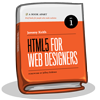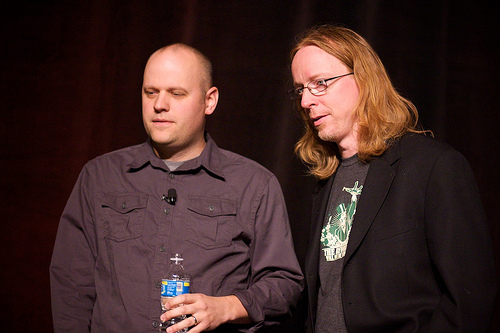
Half of standards making is minutia; the other half is politics. Rightly or wrongly, I’ve long suspected that Atom was born, not of necessity, but because of conflicts between the XML crowd and the founders of RSS. Likewise, rightly or wrongly, I reckoned HTML5 was at least partly Hixie’s revenge against XHTML served as text/html.
And then a funny thing happened. Some friends and I gathered at Happy Cog’s New York studio to hash out the pros and cons of HTML5 from the perspective of semantic-markup-oriented web designers (as opposed to the equally valid perspectives of browser engineers and web application developers—the two perspectives that have primarily driven the creation of HTML 5).
Our first task was to come to a shared understanding of the spec. During the two days and nights we spent poring over new and changed semantic elements, we discovered that many things we had previously considered serious problems were fixable issues related to language.
Easy language problems
Some of these language problems are trivial indeed. For instance, on both the WHATWG and W3C sites, the specification is sometimes called “HTML 5” (with a space) and sometimes called “HTML5” (with no space). A standard should have a standard name. (Informed of this problem, Hixie has removed the space everywhere in the WHATWG version of the spec.)
Likewise, as an end-user, I found it confusing to be told that there is an “HTML5 serialization of HTML 5,” let alone an “XHTML 5 version of HTML5.” I requested that the two serializations be referred to as “HTML” and “XHTML”—emphasizing the distinction between the two kinds of syntax rather than drawing needless attention to version numbers. (Again, Hixie promptly updated the spec.)
Names and expectations
Some language problems are tougher—but still eminently fixable, because they are language problems that mar the presentation of good ideas, not bad ideas that require rethinking.
For example, in order to choose suitable names for the new semantic elements in HTML 5, Hixie analyzed classnames on thousands of websites to see what web designers and developers were already doing. If many designers and developers use classnames like “header” and “footer” to contain certain kinds of content, then HTML 5 should use these labels, too, Hixie and his colleagues reasoned. Doing so would make the purpose of the new elements intuitively obvious to working web professionals, removing the learning curve and encouraging proper element use from the get-go.
It’s a beautiful theory that comes straight out of Bert Bos’s W3C Design Principles. There’s just one problem. Header, and especially footer, behave differently from what their names will lead web designers and developers to expect. Developers will use it for the footer of the page—not for the footer of each section. And they will be frustrated that the footer in HTML5 forbids navigation links. After all, the footer at the bottom of web pages almost always includes navigation links.
To avoid misuse and frustration, the content model of footer should change to match that of header, so that it may be used concurrently as a template level element (the expected use) and a sub-division of section (the new use). Alternately, the element’s name should be changed (to almost anything but “footer”). Expanding the content model is clearly the better choice.
For the love of markup
HTML5 is unusual in many ways. Chiefly, it is the first HTML created in the time of web applications. It is also the first to be initiated outside the W3C (although it now develops there in parallel).
Not surprisingly in a specification that goes on for 900 pages, there are at least a dozen places in HTML5 where a thoughtful standardista might request clarification, suggest a change, or both. My friends and I have taken a stab at this ourselves, and will soon publish our short list of recommendations and requests for clarification.
Nevertheless, the more I study the direction HTML5 is taking, the better I like it. In the words of the HTML5 Super Friends, “Its introduction of a limited set of additional semantic elements, its instructions on how to handle failure, and its integration of application development tools hold the promise of richer and more consistent user experiences, faster prototyping, and increased human and machine semantics.”
Update
[4:47 PM EST] Calling all cars! The HTML5 Super Friends declaration of support is now live, as is the Super Friends Guide to HTML5 Hiccups (i.e. our technical recommendations).
ShortURL: zeldman.com/?p=2438


![]()









